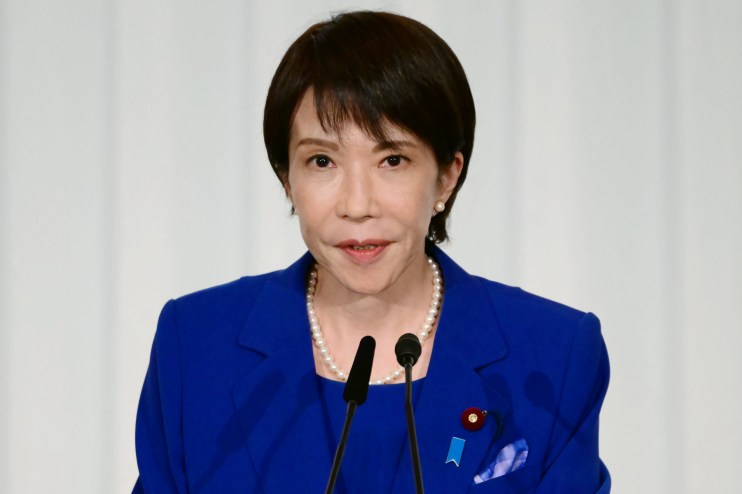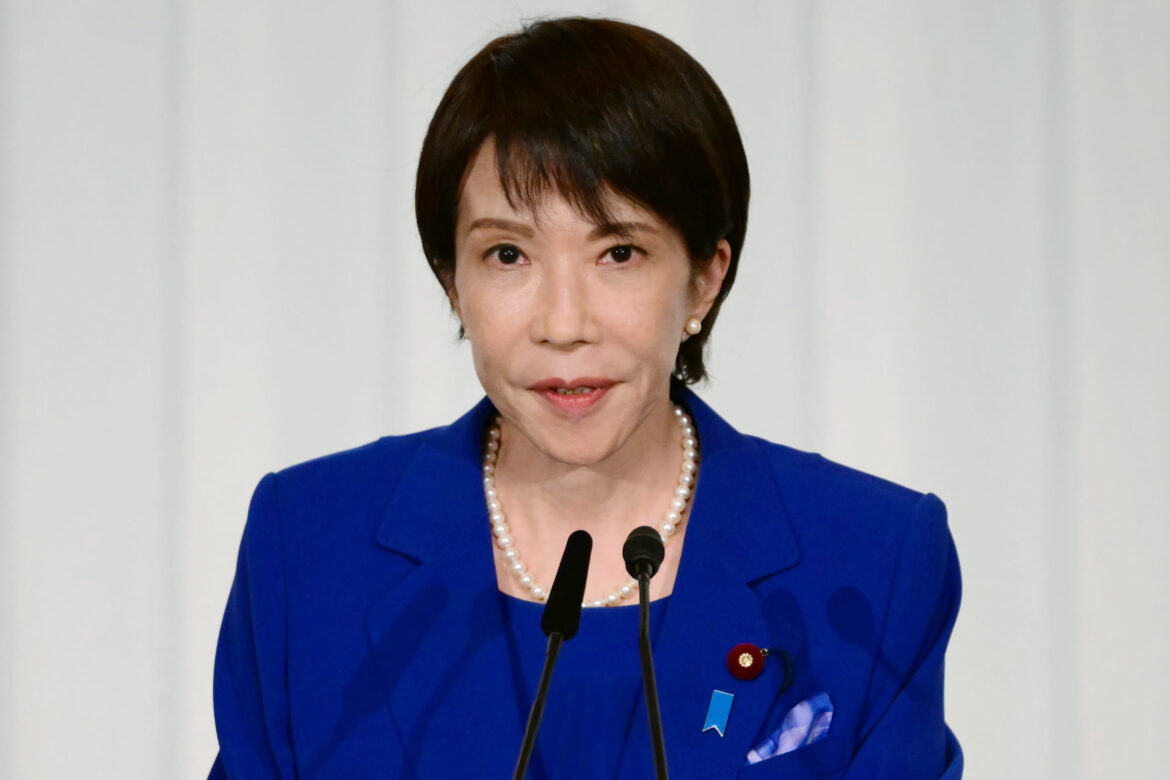Thursday 09 October 2025 5:09 am
| Updated:
Wednesday 08 October 2025 10:39 am
Share
Facebook Share on Facebook
X Share on Twitter
LinkedIn Share on LinkedIn
WhatsApp Share on WhatsApp
Email Share on Email
 TOKYO, JAPAN – OCTOBER 4: Sanae Takaichi, the newly-elected leader of Japan’s ruling party, the Liberal Democratic Party (LDP), attends a press conference after the LDP presidential election on October 4, 2025 in Tokyo, Japan. Conservative Sanae Takaichi hailed a “new era” on October 4 after winning the leadership of Japan’s ruling party, putting her on course to become the country’s first woman prime minister. (Photo by Yuichi Yamazaki – Pool/Getty Images)
TOKYO, JAPAN – OCTOBER 4: Sanae Takaichi, the newly-elected leader of Japan’s ruling party, the Liberal Democratic Party (LDP), attends a press conference after the LDP presidential election on October 4, 2025 in Tokyo, Japan. Conservative Sanae Takaichi hailed a “new era” on October 4 after winning the leadership of Japan’s ruling party, putting her on course to become the country’s first woman prime minister. (Photo by Yuichi Yamazaki – Pool/Getty Images)
Instability in Japan, France and the UK will have global consequences for the bond markets, says Helen Thomas
For investors, the message is simple: political risk is rising. From Tokyo to Paris to London, governments face competing imperatives – fiscal credibility, economic stimulus and electoral survival. Sanae Takaichi, the new leader of Japan’s ruling LDP, is ruffling the feathers of her coalition partners; Emmanuel Macron has just churned through yet another Prime Minister; and Keir Starmer got a post-conference bounce, but only for Nigel Farage. The autumn government bond auction calendar is heavy, and bond buyers are becoming more discriminating. A political spark in any country could light up the huge pile of Covid-induced government debt. As the fourth quarter begins, global sovereign markets are set for a turbulent ride.
Sanae Takaichi’s reflationary ambitions may yet breathe new life into Japan’s long-stagnant economy. She has a soft spot for Abenomics, having served Shinzo Abe in a number of senior cabinet positions. But bond markets are unsettled by her gung-ho embrace of Abe’s Three Arrows which was imposed at a time of chronic deflation rather than the decades-high inflation the country is now experiencing. Upon becoming LDP leader she declared “it’s too early to be complacent” on conquering deflation and warned “What would be best would be to achieve demand-driven inflation, where wages would rise and drive up demand, which in turn causes moderate price rises that boost corporate profits”. She concluded that she will look into whether the government should revise a joint statement it made with the BOJ in 2013, as they “must move in lockstep and cooperate with each other in guiding economic policy”.
This has raised fears of government interference with the Bank of Japan given Takaichi has form in criticising the central bank. A year ago she said “it would be stupid to raise interest rates now”. She refrained from such overt disapproval during her election campaign but one of her closest economic advisers, Etsuro Honda, was far less discreet in a recent Bloomberg interview, cautioning “A rate hike in October is probably difficult in my view. It depends on the macroeconomic environment, but I don’t see a problem if it’s raised by 25 basis points in December.”
Takaichi and Trump
Putting pressure onto the central bank will certainly provide Takaichi with a discussion point when she meets US President Trump later this month. Trump loved Abe and this may well have played into the decision of LDP lawmakers to back Takaichi for leader given Japan/US relations are at a crucial stage. Her predecessor as Prime Minister was Shigeru Ishiba, a man with a passion for making toy models and trainspotting. Trade talks between the US and Japan had been cumbersome. Assuming Sanae Takaichi becomes Prime Minister, this means President Trump will instead be meeting a leader who once worked for a US congresswoman, likes heavy metal and motorbikes and appeared as a TV show host in the 1980s. Trump certainly welcomed her election as “tremendous news for the incredible people of Japan”.
It is not straightforward that she will be installed as Prime Minister in time for his visit. The leader of Komeito, the LDP’s junior coalition partner, raised so many issues with Takaichi in their first meeting that the new parliamentary session might not start on 15th October as planned. If Komeito overplay their hand then Japan could be headed for fresh elections.
This is a mark of how political volatility is rising across the world. Japan’s LDP is one of the most successful democratic parties in the world, having been in power for roughly 65 of the last 68 years. This summer it lost its majority in both houses of parliament for the first time.
Meanwhile Keir Starmer has a majority but one who cannot agree on what they have a mandate to do, while Emmanuel Macron can find no majority for anything. With such an impasse, fiscal policy hangs in the balance. Deficits cannot be brought under control and debt climbs higher.
Japan could be the political canary in the debt-filled coalmine. Japan is the largest foreign holder of US government debt, according to the US Treasury Department. It is however becoming more attractive for the Japanese to hold their own debt rather than that of the Americans. For example, on comparable 30 year bonds, a Japanese investor can get one per cent carry on the currency-hedged US debt but three per cent on the Japanese equivalent, according to John Woods, Asian CIO at Lombard Odier. There was a decent amount of demand at the latest 30yr JGB auction with a bid-to-cover above the 12 month average. This brought some calm to the bond markets which had been wobbling as we enter the final quarter of the year. In the last two weeks there have been two poor JGB auctions with the longest tails in six months, a technically uncovered 10-year German government bond auction and a relatively soft UK 10-year Gilt auction. If political developments unsettle any of the G7 nations, the repercussions will be global.
Helen Thomas is founder and CEO of Blonde Money
Read more
Reeves, beware the bond vigilantes: the dark knights of the City
Similarly tagged content:
Sections
Categories
People & Organisations


AloJapan.com